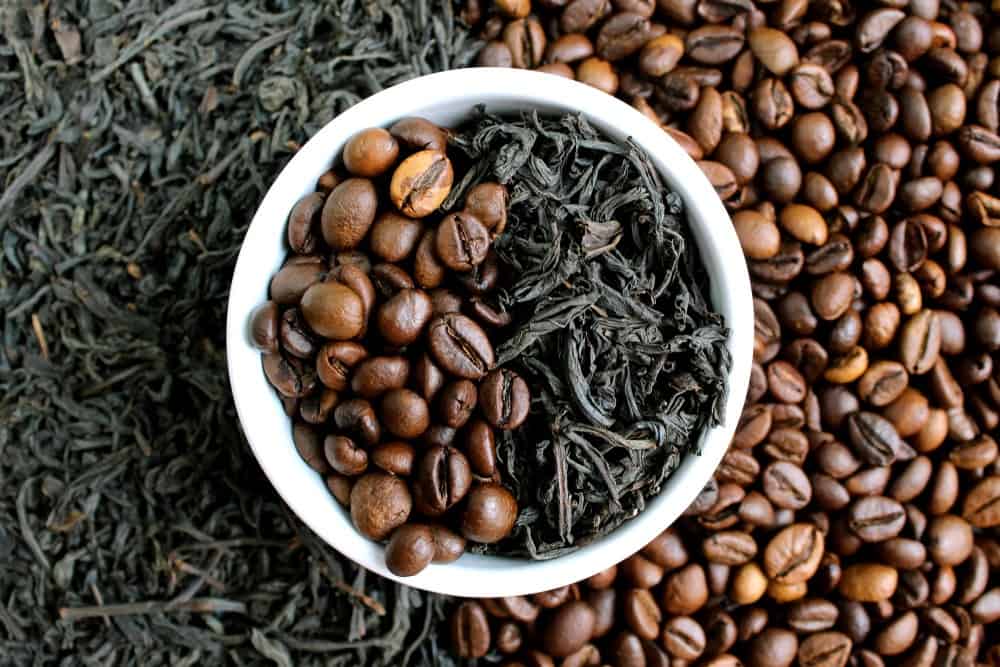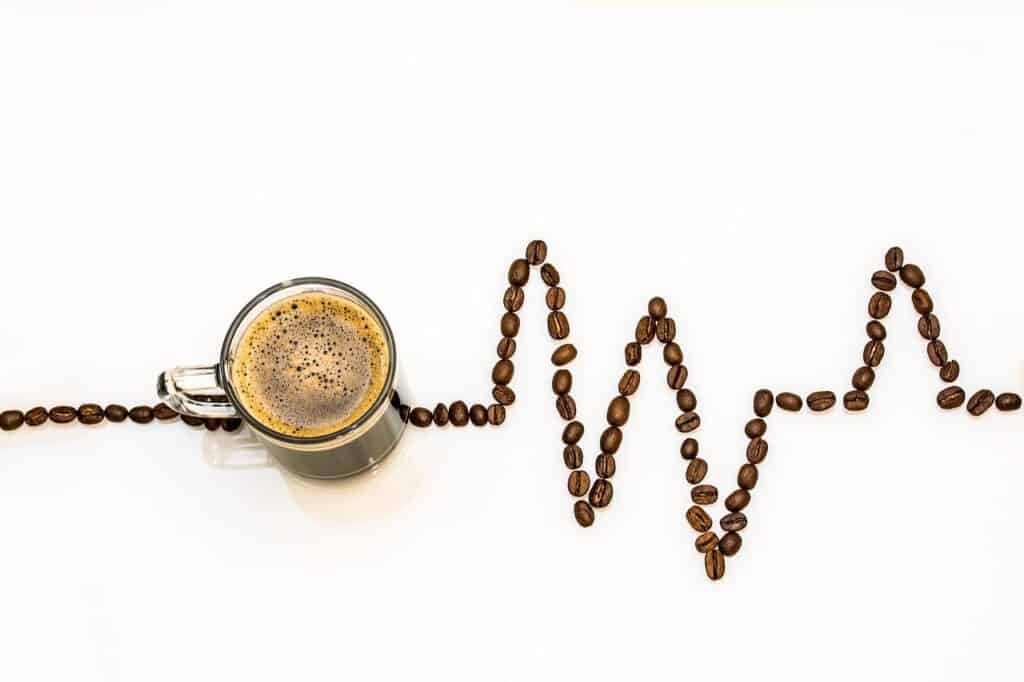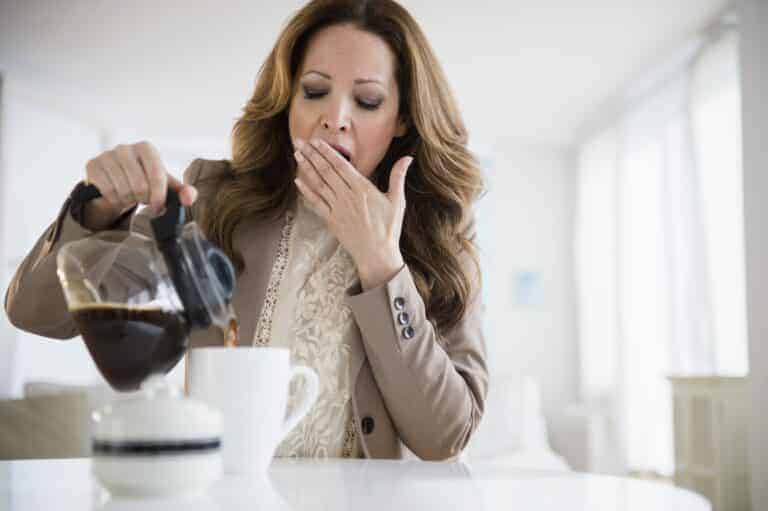does caffeine naturally occur in coffee

Caffeine is one of the most commonly consumed drugs in the world. About 80% of adults consume caffeine daily.
This not only includes people who drink coffee, but also tea, soda, and other caffeinated beverages. It is estimated that approximately 100 million Americans enjoy drinking coffee every day.
What is Caffeine? Caffeine is a stimulant that comes from plants such as tea, mate (a Paraguayan herb), guarana (an Amazonian fruit), and yerbe blanco (derived from the Colombian tree).
It also occurs naturally in some foods such as chocolate, nuts, and wine. Caffeine acts as a natural antagonist of adenosine receptors which are found mainly in the central nervous system (the brain and spinal cord).
As an antagonist, it reduces excitatory responses by blocking the action of adenosine on receptors at which it binds. It exerts this effect by blocking calcium channels in neurones to reduce glutamate release which has been implicated in sleepiness and fatigue during sleep. Coffee contains caffeine as one of its main ingredients.
How Does Caffeine Work?
Caffeine works in a variety of ways. It can bind to adenosine receptors and block the ability of adenosine to stimulate neurons, it can inhibit certain types of ion channels that allow calcium to flow into the cell, or can directly increase the release of dopamine in the cerebral spinal fluid.
Caffeine also inhibits phosphodiesterase-4 which is an enzyme that breaks down cAMP (cyclic adenosine monophosphate) which then increases cAMP levels.
This then triggers other actions such as neuron growth and expression of genes. What is the Difference between Coffee, Tea, Sugar & Caffeine? Coffee, tea, and sugar are all different sources with various amounts of caffeine depending on how they were made.
Additionally, if you add milk or cream to your coffee or tea you will find that not only does this increase its caffeine content but also reduces your body’s ability to process it as well as increasing your tolerance for caffeine over time.
This makes a hot beverage weaker than one that was prepared with no additions or cold drinks like iced coffee or iced tea which have less caffeine altogether.

Caffeine Content in Coffee
Caffeine content in coffee is often measured as a percentage. As of 2014, the caffeine content in brewed coffee is about 70 mg per 8 oz. Cup can range from 20 to 140 mg per cup depending on the variety of coffee beans used and the method of brewing.
The caffeine content in a cup of black tea ranges up to 100mg, with green tea containing up to 30mg per cup.
Caffeine content in decaf coffee or espresso without added milk or sugar varies significantly across brands, ranging from almost zero to 20-40mg per mug. For example, Starbucks French Roast has 267mg of caffeine while Dunkin Donuts Regular Decaf has 3 mg per serving.
Coffee beans also vary in their caffeine content, with robusta beans having less than half the caffeine levels of arabica beans which are more commonly found in brewed coffee.
The amount of caffeine found naturally in a single serving (8oz) of brewed coffee can range from 40-120mg
Health Benefits of Coffee
Coffee is one of the best sources of antioxidants in the diet. As a result, it can help reduce your risk for cardiovascular disease, type 2 diabetes, and certain forms of cancer. It may also prevent depression and dementia.
Caffeine is also a mild diuretic which means it can cause excess water to be released from body cells, making you urinate more often and possibly increasing your risk for dehydration if you are not drinking enough fluids.
Coffee can also increase blood pressure by causing the heart to pump harder for a longer period of time. You don’t need to worry about caffeine affecting your sleep because it will only have an effect if you consume too much coffee in relation to when you should be sleeping (8 hours).
However, caffeine will definitely affect your sleep quality so drink coffee before going to bed at night or earlier in the evening.
Disadvantages of Coffee
Caffeine can be a disadvantage in the long term for people who consume large amounts of it. It is possible to develop tolerance to caffeine and require more of it to achieve its effects.
This is because caffeine affects different parts of the brain than other nootropics (e.g. melatonin, modafinil) which have a stronger effect on the neurotransmitter GABA.
Some sources of caffeine may also cause health risks such as cardiovascular problems, hypertension, and an increased risk of miscarriage or fetal death.
Types of Coffee
Coffee is a brewed drink made with ground-roasted coffee beans, hot water, and sometimes milk or cream. The caffeine content in coffee depends on the type of bean used, the roasting method, and how it is prepared.
There are many different types of coffee that are used for scientific studies but there are only four main types which can be scanned as follows:
Coffee Beans Roasted in Ovens at High Temperature (HOT COFFEE)
Coffee Beans Roasted in Ovens at Low Temperature (LOW-TEMPERATURE COFFEE)
Instant Coffee Powder (Iced/Decaffeinated)
Brewed Coffee
All the instant coffees use a powdered mix to make them. For example, Nestle makes Nescafe instant powder, while Maxwell House makes Maxwell House Instant Decaffeinated Powder.
Brewed coffee is made by pouring hot water over roasted ground beans and letting it sit for a while until it turns brown. This results in a less acidic cup which has good flavor and aroma. More acidic coffees include espresso, filter, or French press coffees.

How to Brew Coffee the Right Way
Brewing coffee can be a challenging task as there are many factors to consider. One of the most important aspects of brewing coffee is keeping it all natural by using only whole beans, fresh water, and a clean machine.
Let’s take a closer look at the steps in the best way to brew your coffee the right way.
-Preheat your machine before you start brewing
-Use filtered or bottled water
-Grind your beans just before brewing and make sure that they are not too fine
-Only use one filter for each pot of water used
-Measure out how many cups you want to make. This helps reduce hot or over-brewed grounds while also ensuring that your initial grind size is appropriate for the size of your brewer
-Place the filter in the basket then fill with preheated water, start timer, wait 2 minutes then add ground coffee
-Wait another minute and pour carefully into serving container
-Enjoy!
FAQs
What is caffeine?
Caffeine is a mild stimulant that affects the brain and body by enhancing the function of their nervous system. Caffeine is a substance that occurs naturally in coffee, tea, cola, and other plants.
It affects the central nervous system (CNS), which regulates motor activity, thinking, and memory. Caffeine also acts on the sympathetic nervous system (SNS), which controls some of our body’s functions, including our heart rate and blood pressure.
Because of its effects on the CNS, it can be called a brain stimulant. It can improve attention span, reduce tiredness, increase energy and improve concentration. Many people drink coffee, tea, or cola to stay awake and alert during the day or to improve their mood.
What are the side effects of caffeine?
Side Effects of Caffeine: Caffeine is a legal stimulant that is found naturally in coffee, tea, kola nuts, cacao beans, and yerbe blanco.
It is also produced in the body from the following amino acids: valine and l-isoleucine. Side effects of caffeine can range from mild to severe. Side effects are more likely to occur when caffeine is consumed in large amounts or for a long period of time. The side effects of caffeine are:
1. Increased blood pressure: One study found that caffeine raised blood pressure by 10 mm Hg systole and 8 mm Hg diastole. This is likely due to adrenergic stimulation of the sympathetic nervous system.
2. Heart palpitations: This occurred in one of five studies where researchers administered a dose equivalent to three cups of coffee to healthy volunteers. These volunteers experienced a sudden heart rate increase accompanied by chest pain and discomfort. In another study, researchers observed some palpitations in 36% of study participants who consumed caffeinated cola beverages containing 2 ounces (57 g) of liquid product per serving (equivalent to three cups).
3. Fatigue: Caffeine may cause fatigue by interfering with adenosine receptor signalling. This is because adenosine normally induces drowsiness via its receptors located on nerve cells and neurons. Adenosine receptor antagonists can lead to increased wakefulness as these receptors are also involved in sleep initiation and sleep maintenance via circulating adenosine monophosphate (AMP).
4. Insomnia: It may disturb sleep by decreasing slow-wave sleep via adenosine A2B receptor signalling in brain regions such as the hippocampus and pons (not in the frontal cortex).
Caffeine also prevents REM sleep via activation of adenosine A1 receptors on cells within the hippocampus (i>noradrenergic neurons extend from the base into the shell of neurons dominated by serotonergic pyramidal cells; dendritic trees in these neurons extend into layers IV and V; synaptic contacts are with interneurons which terminate onto pyramidal cells)).





